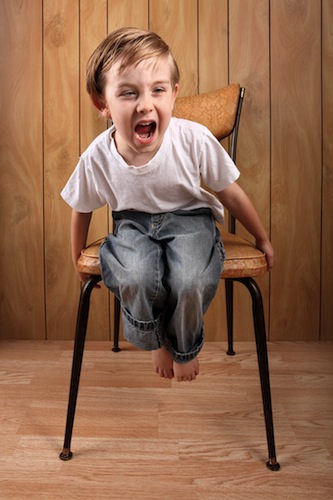When the tantrums don’t stop a lot of parents resort to the time-out chair.
But how do you know if putting your child’s time-out is really effective?
Therapist Rian Jensen says there is a definitely a right and a wrong way to do
time-outs.
Why Use Time-Out?
Our focus should always be how we can make our children successful. Time
out is a tool that can be used to change behaviors that are not successful for
the child. Research tells us that we are more likely to change problem
behavior when we use a positive approach as our first line of action. Our
homes should be safe, positive environments for our children. Positive
environments are those that:
· Focus on what children do right
· Reward positive, appropriate behaviors
· Showcase Strengths
· Maintain a ratio of 8 positives for each correction
However, sometimes we do all we can using positive approaches, yet the
child still needs a correction or support in changing a behavior. Timeout can
be a tool to do this, especially for younger children who have difficult time
reasoning or understanding. Time out should be used last resort in changing
behavior and focus on behavior that is harmful to the child or others. Time
out is most effective with younger children, losing its’ power as they get
older.
Effective Time-Out
Choose a Behavior: Pick what behavior or behaviors you will be
using time out for and set a clear expectation. To be effective, you shouldn’t
use time out as a catch-all for poor behavior, but as an intervention for a
specific behavior. Anything overused will lose its’ power.
Choose a Spot: In most cases the location you use for time out
should be free of stimulus and away from the action in the home. It should
be a place the child cannot receive reinforcement or attention from you or
others in the home. Time out is most effective if you can ignore the children
during the time out period.
Choose a Length of Time: General guidelines suggest a minute per
age starting at age two. Use a timer in your kitchen or on your phone so you
don’t forget about the child.
Be Consistent: Each time the child exhibits the behavior you are
trying to change, implement the time out immediately. Both parents need
to be on the same page. Children need to be able to predict the time out will
occur if he or she chooses the behavior. Be consistent with positive praise
when the child is demonstrating the behavior correctly.
Don’t Threaten a Time-Out: Never say, “If you don’t stop hitting,
you’ll go to time out.” There are no second chances. Because you are
consistent, if the child exhibits the behavior, they go to time out.
Finishing Time-Out: Once the time out is finished, tell the child
“Time out is over.” You will then have many opportunities to get the child
moving in the right direction by praising them for all appropriate behaviors
you see. This will shape future positive behavior.
Time-Out an Object: Timing out an object may be more effective
then timing out a child. It may be timing out a favored toy. With older
children this is the most effective form of time out. Electronics, cell phones
and cars tend to have power with teenagers.















Add comment